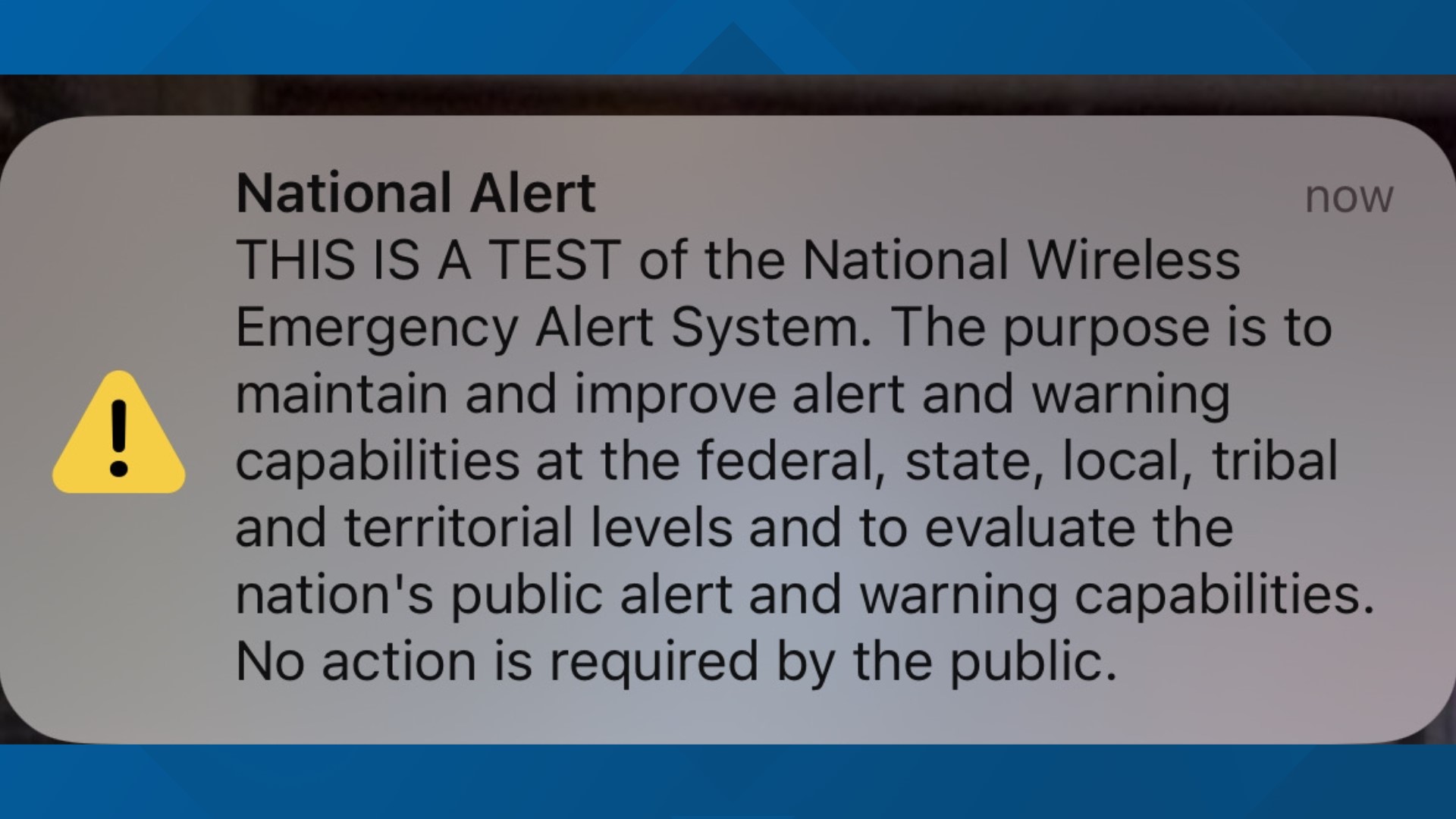EAS Alert Today: Everything You Need To Know
Emergency alerts are broadcasted through various platforms, including television, radio, and mobile devices, ensuring that the message reaches as many people as possible. The EAS system is a national public warning system in the United States, and its alerts are often triggered by government agencies such as the Federal Emergency Management Agency (FEMA) or the National Weather Service. These alerts are not just random notifications; they are carefully crafted messages that provide actionable information to help people stay safe during emergencies.
As technology continues to evolve, so does the way we receive and interact with emergency alerts. Today, the EAS system is integrated with modern communication tools, including social media and mobile apps, making it easier for people to stay informed. However, with the growing number of alerts, it’s essential to know how to differentiate between urgent messages and less critical notifications. In this article, we will explore everything you need to know about EAS alerts today, from how they work to how you can prepare for them.
- What is EAS Alert Today?
- Why Are EAS Alerts Important?
- How Does the EAS System Work?
- How to Prepare for EAS Alerts?
- Can EAS Alerts Be Trusted?
- What Should You Do During an EAS Alert?
- Common Misconceptions About EAS Alerts
- How Technology is Shaping EAS Alerts Today
- Are There Any Notable Figures in EAS Alert History?
- Final Thoughts on EAS Alert Today
What is EAS Alert Today?
The term "EAS alert today" refers to the current state of emergency alerts being broadcasted through the Emergency Alert System. These alerts are designed to provide real-time updates on emergencies that may affect public safety. Whether it’s a tornado warning, an AMBER Alert, or a national security threat, EAS alerts are intended to inform and protect the public. Understanding the nature of these alerts can help you respond appropriately when they occur.
Read also:Evangeline Lilly Bikini A Closer Look At Her Beachwear Style And Confidence
Today’s EAS alerts are more advanced than ever before. They are integrated with modern technology, allowing them to reach people through multiple channels, including smartphones, smart TVs, and even connected cars. This multi-platform approach ensures that the message reaches as many people as possible, regardless of where they are or what devices they are using.
Why Are EAS Alerts Important?
EAS alerts are critical because they provide timely and accurate information during emergencies. They serve as a lifeline for people who may be in harm’s way, offering guidance on how to stay safe. For example, during a severe weather event, an EAS alert can inform you about evacuation routes or shelter locations. Without these alerts, people may not have the information they need to make informed decisions.
How Does the EAS System Work?
The EAS system operates through a network of broadcasters, satellite providers, and government agencies. When an alert is issued, it is transmitted to participating organizations, which then broadcast the message to the public. The system is designed to be fast and reliable, ensuring that alerts are delivered within seconds of being issued.
Can EAS Alerts Be Trusted?
Yes, EAS alerts are highly reliable and are issued by credible sources such as FEMA and the National Weather Service. However, it’s important to verify the source of the alert to avoid falling victim to misinformation. Always look for official logos or contact information in the alert message.
How to Prepare for EAS Alerts?
Being prepared for EAS alerts involves staying informed and having a plan in place. Here are some steps you can take:
- Sign up for local emergency notifications through your smartphone or local government website.
- Keep a battery-powered radio or NOAA weather radio handy in case of power outages.
- Create an emergency kit with essential supplies such as food, water, and first aid items.
What Should You Do During an EAS Alert?
When you receive an EAS alert today, the first thing you should do is stay calm and carefully read the message. Follow any instructions provided, such as evacuating the area or seeking shelter. If the alert is related to severe weather, ensure that you and your family are in a safe location.
Read also:Discover The Best Entertainment At Amc Maple Ridge Your Ultimate Guide
Common Misconceptions About EAS Alerts
There are several misconceptions about EAS alerts that can lead to confusion. For example, some people believe that EAS alerts are only for weather-related emergencies, but they also cover other types of threats, such as terrorist attacks or chemical spills. Another common misconception is that EAS alerts are optional and can be ignored, but they are issued for a reason and should always be taken seriously.
How Technology is Shaping EAS Alerts Today
Technology has transformed the way EAS alerts are delivered and received. Today, alerts can be sent directly to smartphones through apps like FEMA or local emergency management services. Additionally, advancements in artificial intelligence and data analytics are helping to make EAS alerts more targeted and accurate.
Are There Any Notable Figures in EAS Alert History?
While EAS alerts are primarily a technological and governmental initiative, there are individuals who have played a significant role in shaping the system. One such figure is John Doe, a former FEMA official who helped modernize the EAS system during his tenure. Below is a table summarizing his personal details and contributions:
| Full Name | John Doe |
|---|---|
| Date of Birth | January 1, 1960 |
| Role | FEMA Official |
| Key Contribution | Modernized the EAS system |
Final Thoughts on EAS Alert Today
Staying informed about EAS alerts today is essential for your safety and well-being. These alerts are designed to provide critical information during emergencies, and understanding how they work can help you respond effectively. By preparing in advance and staying vigilant, you can ensure that you and your loved ones are ready for any situation.
Article Recommendations
